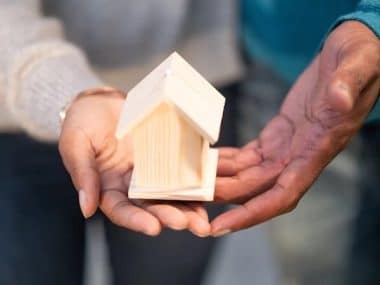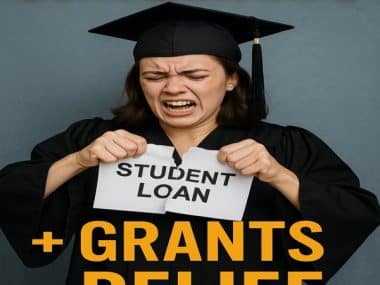Global Development Loan Institutions (GDLIs) are the backbone of international economic development. These organizations play a vital role in reducing poverty, improving infrastructure, and stabilizing economies across the developing world. As of 2025, their influence is growing, especially in addressing post-pandemic recovery, sustainable development, and climate financing.
This blog post explores the leading GDLIs, their mission, financing models, global impact, and how countries especially developing ones can tap into their financial and technical resources.
What Are Global Development Loan Institutions?
Global Development Loan Institutions are financial entities established to provide low-interest loans, grants, and technical assistance to developing countries. Their goals include:
- Alleviating poverty
- Promoting economic development
- Supporting health, education, infrastructure, and environmental sustainability
- Assisting countries in economic crisis or recovery
These institutions are usually funded by contributions from member countries, who also help govern their activities.
Top Global Development Loan Institutions in 2025
1. International Monetary Fund (IMF)
The IMF plays a critical role in maintaining international financial stability. Its primary focus is:
- Monitoring the global economy
- Providing policy advice
- Offering short-to-medium term financial assistance to countries facing balance of payments problems
Key Programs:
- Extended Fund Facility (EFF)
- Rapid Financing Instrument (RFI)
- Resilience and Sustainability Facility (RSF)
Recent Initiatives (2025):
- Climate-related fiscal frameworks
- Debt restructuring guidance for low-income countries
2. World Bank Group
The World Bank is a group of five organizations, with the International Bank for Reconstruction and Development (IBRD) and the International Development Association (IDA) being the most prominent in lending.
IBRD focuses on middle-income and creditworthy low-income countries.
IDA gives interest-free loans and grants to the poorest countries.
Key Areas of Funding:
- Education
- Healthcare
- Infrastructure
- Agriculture
- Water and sanitation
Flagship Projects:
- Pandemic Preparedness Programs
- Climate Adaptation Infrastructure in Sub-Saharan Africa
- Green Energy Transition Funds
3. Asian Development Bank (ADB)
ADB serves the Asia-Pacific region, focusing on inclusive and sustainable economic growth.
2025 Focus Areas:
- Digital connectivity
- Renewable energy infrastructure
- Gender equality
- Disaster risk management
Loan Types:
- Ordinary Capital Resources (OCR)
- Asian Development Fund (ADF) concessional loans and grants
4. African Development Bank (AfDB)
AfDB is crucial in financing infrastructure and sustainable development projects across Africa.
Core Areas:
- Energy and power
- Transport
- Water supply and sanitation
- Agriculture and food security
New Strategies (2025):
- AfDB’s “Desert to Power” solar initiative
- Youth entrepreneurship loan facilities
- Green Bonds for climate projects
5. European Investment Bank (EIB)
Though mainly focused on EU member countries, EIB also supports global projects aligned with EU external policies, especially in Africa, the Middle East, and the Caribbean.
Priorities in 2025:
- Climate action and environmental sustainability
- Innovation and skills development
- Sustainable urban development
Notable Mechanisms:
- External Lending Mandate (ELM)
- EIB Global – for development financing outside the EU
6. Inter-American Development Bank (IDB)
The IDB supports Latin America and the Caribbean by financing projects in transportation, health, education, and digital transformation.
Key 2025 Programs:
- Digital Skills in Rural Latin America
- Women-led Entrepreneurship Loans
- Green Infrastructure Bonds
Financial Instruments:
- Sovereign Guaranteed Loans
- Non-Sovereign Loans
- Grants and technical assistance
How These Institutions Provide Loans
GDLIs provide both sovereign loans (to governments) and non-sovereign loans (to private sector projects). Here’s how they operate:
Loan Application Process
- Country identifies a project or need.
- Proposal is submitted through respective government bodies.
- Feasibility study and environmental assessment.
- Project appraisal and negotiation.
- Loan agreement and disbursement.
Loan Terms
- Long repayment periods (15–40 years)
- Grace periods before repayment starts
- Low or zero interest (especially for IDA or ADF borrowers)
Impact of Global Development Loan Institutions on Developing Economies
Global Development Loan Institutions significantly impact the development trajectory of recipient countries. Their influence is measurable in:
Infrastructure Development
From roads to power grids, GDLIs fund mega-infrastructure that spurs economic activities.
Human Capital Growth
Financing education and health systems increases literacy, workforce productivity, and overall life expectancy.
Sustainable Development
GDLIs lead the global shift to green energy, climate-smart agriculture, and disaster resilience.
Private Sector Empowerment
Many institutions offer credit lines, guarantees, and equity investments to MSMEs and startups.
Recent Innovations in Global Lending (2024–2025)
As global needs evolve, GDLIs are adapting:
Green & Climate Financing
New green bonds and climate resilience loans are helping countries meet Net Zero goals.
Digital Lending Platforms
Automation and AI are streamlining project appraisals and disbursements.
Blended Finance
Combining grants, public loans, and private investment to de-risk projects and attract private capital.
Challenges Facing Global Development Loan Institutions
Despite their successes, GDLIs face several challenges:
- Debt Sustainability: Many low-income countries are at risk of debt distress.
- Bureaucratic Delays: Loan approval can still take months or years.
- Geopolitical Influence: Donor countries may steer funding to politically strategic areas.
- Climate Urgency: Financing needs for climate adaptation far outpace available funds.
How Countries Can Benefit from Global Development Loan Institutions
Here’s how developing countries can leverage these institutions:
- Strategic Alignment: Ensure national development plans align with donor priorities (e.g., climate, education).
- Institutional Capacity Building: Strengthen internal capacity for project proposal, implementation, and reporting.
- Engagement with Private Sector: Collaborate with local businesses to make projects sustainable and impactful.
- Transparency and Governance: Maintain transparency in fund utilization to attract long-term support.
Future Outlook for Global Development Loan Institutions
By 2030, GDLIs are expected to:
- Increase climate-related lending by 50%
- Partner more deeply with private investors
- Emphasize digital economy and inclusion
- Create more localized, decentralized funding mechanisms
Their role will remain central in addressing global inequality, disaster recovery, and sustainable transformation.
Global Development Loan Institutions
Global Development Loan Institutions are more than just lenders they are partners in national development.
As the world faces unprecedented economic, environmental, and technological changes, institutions like the IMF, World Bank, AfDB, ADB, IDB, and EIB are evolving to meet the needs of a rapidly changing global landscape.
Whether you’re a policymaker, entrepreneur, or development advocate, understanding how these institutions work and how to access their support is essential in 2025 and beyond.










